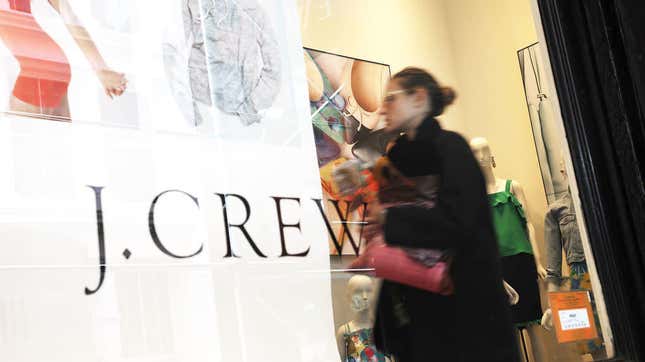The End of J. Crew Was Inevitable
Latest

On Monday J. Crew officially filed for bankruptcy. It makes the store the first official major brand casualty of the covid-19 pandemic, but J. Crew’s problems existed long before retailers were required to close their brick and mortar stores.
Since 2011, J. Crew has been flailing under the weight of nearly $1.7 billion in debt, the result of a $3 billion buyout that took the brand private and placed it in the hands of two private equity firms. The company has streamlined with waves of store closures and job eliminations over the past several years, and the success of the company’s sister brand Madewell, which has eclipsed J. Crew in both sales and style, has only underlined its problems. Even though J. Crew tried to rebrand itself again and again, jumping from well-designed smart staples to expensive statement pieces, it has failed to capture loyal customers. The cashmere blend cardigans and trendy work ensembles that were once the store’s specialty couldn’t stabilize a brand in an ongoing identity crisis. The preppy customer that J. Crew spent decades cultivating disappeared and no J. Crew woman materialized in her place.
J. Crew’s downfall began when it strayed from the clothes that made the store a household name. The brand first found success through catalogs. J. Crew grew out of the 1940s company Popular Merchandise, Inc., which sold clothing door to door like Avon makeup or through catalogs. In the early ’80s executives at Popular Merchandise decided to focus on what J. Crew founder Arthur Cinader called “classically oriented women’s clothing,” to cash in on the rise of brands like Lands’ End.
The catalog first appeared under the J. Crew name in 1983, with “crew” chosen in reference to the sport, and the company’s leisurewear found a customer base in upper- to middle-class consumers. The design of the brand was anchored by Cinader’s daughter Emily Scott who became J. Crew’s design chief and president of the catalog in the early 1990s.
-

-

-

-

-

-

-

-

-

-

-

-

-

-

-

-

-

-

-

-

-

-

-

-

-

-

-

-

-

-

-

-

-

-

-

-

-

-

-

-








































